Golden Stool Of Ashanti People And Legend Of The Black Cloud Appearing In The Sky
A. Sutherland - AncientPages.com - The golden stool is sacred to the Ashanti people. It is a traditional symbol of leadership and a holy object that holds the souls of the Ashanti people, the living, the dead, and the unborn.
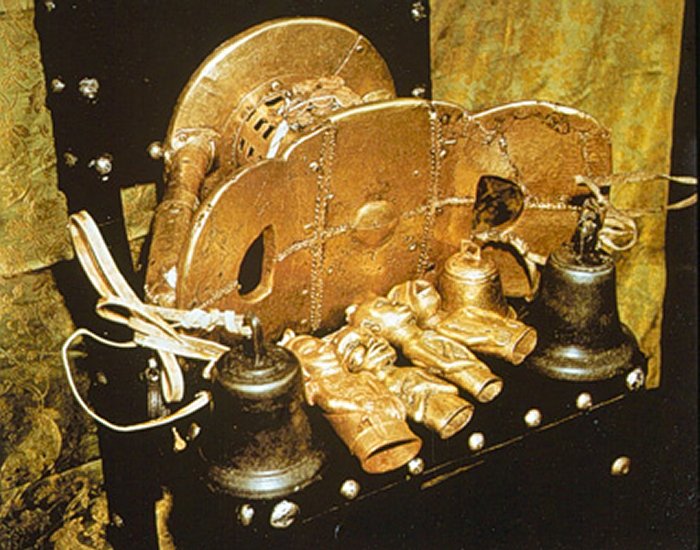 Golden Stool of the Ashanti Empire. Fair use image via Black Past
Golden Stool of the Ashanti Empire. Fair use image via Black Past
Even today, great pride in the Ashanti King lives on in the tradition of the Golden Stool.
Being carefully protected, the Golden Stool represents the worship of ancestors, well-being, and the nation of Ashanti. It symbolizes nationhood and contains the Soul of Ashanti (sumsum). In the mythology of the Ashanti people, the Sunsum is one's Spirit.
A Black Cloud Appeared In The Sky
The Golden Stool is the subject of a legend about how the King of the Ashanti was chosen by the tribe's supreme god, Nyame, whose name means "he who knows and sees everything" and "omniscient, omnipotent sky god."
Nyame decided that the Ashanti people were ready to become a mighty nation. However, this would only happen if the individual tribes selected one chief to lead them all. Nyame sent a magician and healer named Anotchi to visit the Ashanti chiefs. Suddenly, a black cloud appeared in the sky, and a golden stool was clearly seen inside it.
Anotchi commanded the stool to land in front of the man who should be King, and the stool placed itself before a chief named Osai Tutu, who became the first king of the Ashanti Kingdom in West Africa. The next step for Osai Tutu was to unify all people and give them a constitution, laws, and customs.
 An Akan stool believed to be for a Queen mother, 1940–1965, in the collection of the Children's Museum of Indianapolis. Image credit: The Children's Museum of Indianapolis - CC BY-SA 3.0
An Akan stool believed to be for a Queen mother, 1940–1965, in the collection of the Children's Museum of Indianapolis. Image credit: The Children's Museum of Indianapolis - CC BY-SA 3.0
The legend also tells that Anotchi called the divine Golden Stool a gift from the god Nyame to the Ashanti people. As the magician said, the stool would ensure good health, prosperity, and success for all the kingdom's people as long as the sacred object was kept safely in the royal palace. The item must be held with the strictest precaution and always protected.
According to the legend, if it is destroyed one day or captured by the enemies of the Asante Kingdom of Ghana, the whole kingdom will descend into chaos. However, it can be taken outside only on exceptional occasions, but it must never come in contact with the ground.
No one was allowed to sit on it, and even the Ashanti kings were instructed only to use it as a sacred symbol of their authority to rule Ghana.
Golden Stool - The Seat Of The Soul Of The Rightful Owner
In beliefs, each stool is considered the seat of the soul of the rightful owner, and when it is not used and stands against a wall, other souls passing by should not settle on it.
The royal throne can never touch the ground, so it is always on a blanket. The new King is lifted and lowered above the throne during the coronation without touching it. The throne is brought to the King because only the Asantehene (the absolute monarch of the Asante people and the historical Kingdom of Asante) has the right to touch it.
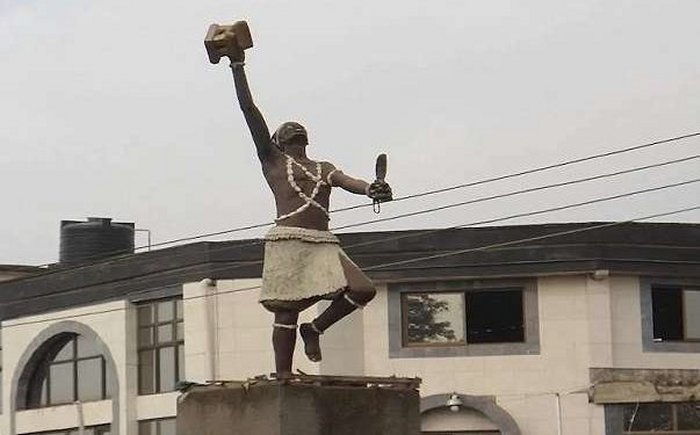 Anotchi commanded the stool to land in front of the man who should be King, and the stool placed itself before a chief named Osai Tutu, who became the first king of the Ashanti Kingdom in West Africa. Image source
Anotchi commanded the stool to land in front of the man who should be King, and the stool placed itself before a chief named Osai Tutu, who became the first king of the Ashanti Kingdom in West Africa. Image source
Tradition has it that not everyone could see the throne, and only the King and his trusted advisers knew where the throne was hidden. The stool is vital to the Ashanti, and they are ready to defend it even at the peril of their lives. They allowed the thirteenth king ruler of the Kingdom of Ashanti, Prempeh (1870 – 1931), to go into exile instead of surrendering the stool to Gov. Hogdson, the then-British governor.
The final war (1900) was prompted by Sir Frederick Mitchell Hodgson, the British Governor of the Gold Coast, to sit on the Golden Stool. The intense fighting led to the death of more than 2,000 Ashanti and 1,000 British and Allied troops.
Both totals were higher than the deaths from all previous Anglo-Ashanti wars combined. The war ended after six months, but the British never captured the Golden Stool.
Hidden by the Ashanti, it was accidentally found by a group of African railroad builders in 1920. They stripped it of its gold ornaments and were trialed by the Ashanti and sentenced to death.
After realizing the importance of the Golden Stool to the Ashanti, the British gave assurances that they would never interfere with it again.
Restored to its proper place, the Golden Stool continues to be used in rituals crowning the Asantehene, although he is now considered a traditional ruler without political power or influence.
Nonetheless, the Golden Stool remains a cherished symbol of the former Ashanti Empire.
Many Designs Of The Golden Stool But The Same Symbolic Meaning
The basic shape of Asante stools has been copied by other cultures and sold worldwide. Initially, each Golden Stool is made of a curved, single log of wood. It has a crescent-shaped seat, flat base, intricately made backrest, 46 cm high (18 inches), 61 cm (24 inches) wide, and 30 cm (12 inches) deep platform.
Its entire surface is decorated with gold and ringed with bells to warn the King of the danger. Today, the stool is one of the most important gathering points for the tribes. It symbolically demonstrates the continuity of succession to the throne and the strength of the entire nation.
Many kingdoms and chiefdoms in Africa had and continue to use stools instead of chairs as thrones.
According to the Ashanti tradition, the Golden Stool is symbolic because each throne is unique. It means it has a different meaning for the person whose soul sits on it.
There are many designs of this remarkable symbolic artifact, and some include animal patterns or depict images that recall the person who used it.
Written by – A. Sutherland - AncientPages.com Senior Staff Writer
Updated on January 2, 2024
Copyright © AncientPages.com All rights reserved. This material may not be published, broadcast, rewritten or redistributed in whole or part without the express written permission of AncientPages.com
Expand for referencesMore From Ancient Pages
-
 On This Day In History: Battle Of Megiddo Between Thutmose III And King Of Kadesh’s Coalition – On Apr 16, 1457
News | Apr 16, 2016
On This Day In History: Battle Of Megiddo Between Thutmose III And King Of Kadesh’s Coalition – On Apr 16, 1457
News | Apr 16, 2016 -
 Unusual Biblical Cloud – What Was This Perplexing Atmospheric Phenomenon?
Ancient Mysteries | Feb 22, 2019
Unusual Biblical Cloud – What Was This Perplexing Atmospheric Phenomenon?
Ancient Mysteries | Feb 22, 2019 -
 On This Day In History: Comet Donati First Observed By Italian Astronomer – On June 2, 1858
News | Jun 2, 2016
On This Day In History: Comet Donati First Observed By Italian Astronomer – On June 2, 1858
News | Jun 2, 2016 -
 Top 10 Archaeological Discoveries 2023
Archaeology | Dec 27, 2023
Top 10 Archaeological Discoveries 2023
Archaeology | Dec 27, 2023 -
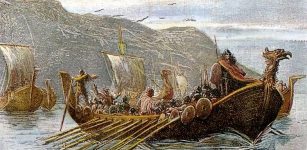 Norse Kingdom Of Dublin Was Founded By The Vikings In 839 A.D.
Ancient History Facts | Mar 15, 2016
Norse Kingdom Of Dublin Was Founded By The Vikings In 839 A.D.
Ancient History Facts | Mar 15, 2016 -
 Bronze Age Royal Tombs Unearthed In Ruins Of Ancient City Of Pylos, Greece
Archaeology | Dec 30, 2019
Bronze Age Royal Tombs Unearthed In Ruins Of Ancient City Of Pylos, Greece
Archaeology | Dec 30, 2019 -
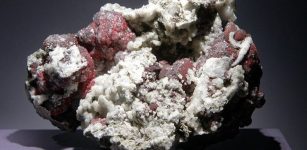 World’s Oldest Mercury Poisoning Revealed In Copper Age Iberia
Archaeology | Nov 16, 2021
World’s Oldest Mercury Poisoning Revealed In Copper Age Iberia
Archaeology | Nov 16, 2021 -
 Ancient DNA Reveals How People Migrated During The Roman Empire
DNA | Feb 1, 2024
Ancient DNA Reveals How People Migrated During The Roman Empire
DNA | Feb 1, 2024 -
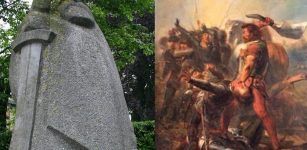 Grutte Pier – Legendary Giant Frisian Freedom Fighter Who Sought Revenge
Featured Stories | Dec 20, 2018
Grutte Pier – Legendary Giant Frisian Freedom Fighter Who Sought Revenge
Featured Stories | Dec 20, 2018 -
 Effects Of The Volcanic Eruption In Alaska Rippled Through Ancient Egypt During Cleopatra’s Reign
Archaeology | Jul 26, 2022
Effects Of The Volcanic Eruption In Alaska Rippled Through Ancient Egypt During Cleopatra’s Reign
Archaeology | Jul 26, 2022 -
 Mystery Of The Cave Where People Vanish Or Become Disoriented
Featured Stories | Jan 2, 2024
Mystery Of The Cave Where People Vanish Or Become Disoriented
Featured Stories | Jan 2, 2024 -
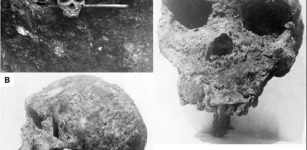 Evolution Puzzle – Broken Hill Skull And Homo Heidelbergensis Cast Doubt Over Modern Human Ancestry
DNA | May 29, 2023
Evolution Puzzle – Broken Hill Skull And Homo Heidelbergensis Cast Doubt Over Modern Human Ancestry
DNA | May 29, 2023 -
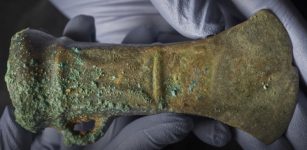 Mysterious Havering Hoard – Largest Ever Bronze Age Hoard Discovered In London
Archaeology | Oct 21, 2019
Mysterious Havering Hoard – Largest Ever Bronze Age Hoard Discovered In London
Archaeology | Oct 21, 2019 -
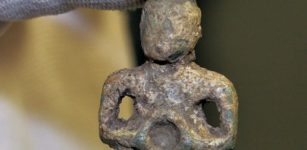 Rare 2000-Year-Old Celtic Figurine Among Finds In Cambridgeshire
Archaeology | Dec 18, 2018
Rare 2000-Year-Old Celtic Figurine Among Finds In Cambridgeshire
Archaeology | Dec 18, 2018 -
 Enigmatic Ale’s Stones – Sweden’s Megalithic Ship-Like Formation
Featured Stories | Jan 17, 2023
Enigmatic Ale’s Stones – Sweden’s Megalithic Ship-Like Formation
Featured Stories | Jan 17, 2023 -
 Unusual Carved Stone Pillar With ‘Special Powers’ Discovered In Canada Confirmed Authentic Indigenous Artifact
Archaeology | Jan 29, 2021
Unusual Carved Stone Pillar With ‘Special Powers’ Discovered In Canada Confirmed Authentic Indigenous Artifact
Archaeology | Jan 29, 2021 -
 Ancient Solar Eclipses That Re-Wrote History And Made Ever-Lasting Impact On Humans
Featured Stories | Aug 15, 2017
Ancient Solar Eclipses That Re-Wrote History And Made Ever-Lasting Impact On Humans
Featured Stories | Aug 15, 2017 -
 Rare 2,500-Year-Old Saw Discovered At The Ancient Hittite City Hattusa
Archaeology | Nov 27, 2023
Rare 2,500-Year-Old Saw Discovered At The Ancient Hittite City Hattusa
Archaeology | Nov 27, 2023 -
 Political Debates In Ancient Rome: Great Harshness, Personal Attacks And Unpleasant Atmosphere
Archaeology | Aug 29, 2018
Political Debates In Ancient Rome: Great Harshness, Personal Attacks And Unpleasant Atmosphere
Archaeology | Aug 29, 2018 -
 Ancient DNA Reveals Irish Are Not Celts – Irish Ancestors Came From Biblical Lands – Scientists Say
Archaeology | Mar 30, 2020
Ancient DNA Reveals Irish Are Not Celts – Irish Ancestors Came From Biblical Lands – Scientists Say
Archaeology | Mar 30, 2020
